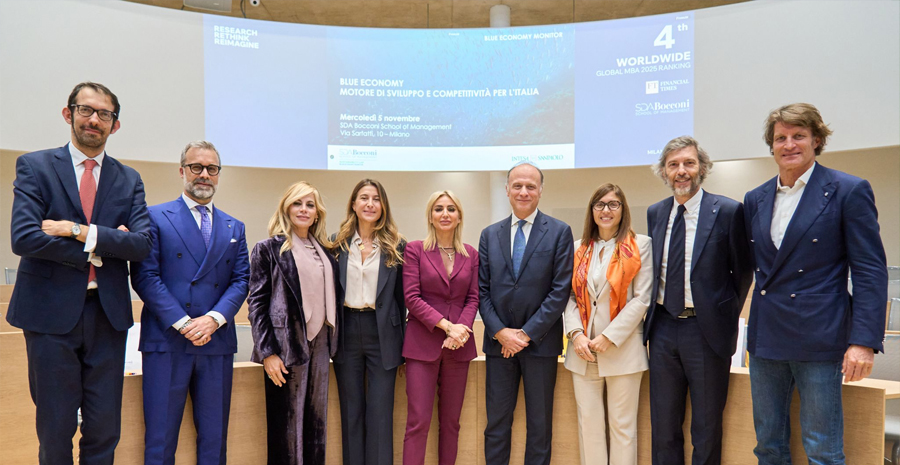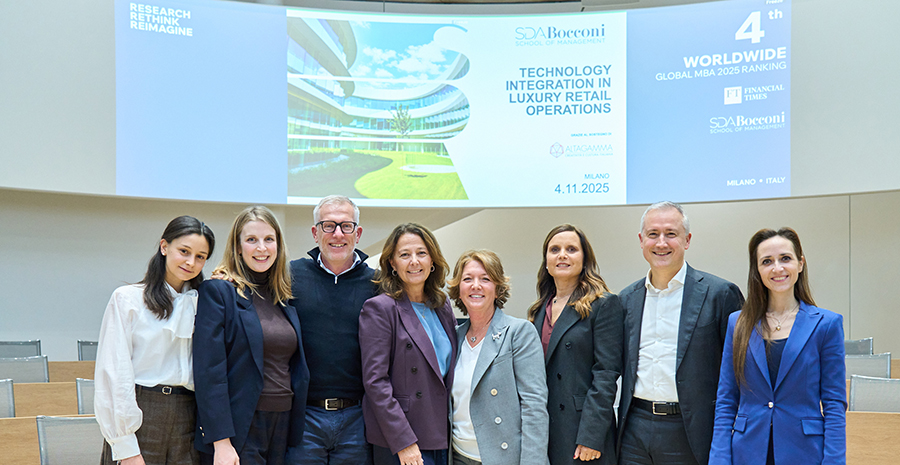Space: an enterprise to handle with care
Three questions for Simonetta Di Pippo, the new Professor of Practice at SDA Bocconi, who will be taking the helm at the SEE Lab. An astrophysicist with two honorary degrees in International Relations and Environmental Studies, Professor Di Pippo will be taking up her new role after a career path that has led her to prominent positions in the field of space economy at the Italian Space Agency, the European Space Agency, and the United Nations. Her “guiding star,” so to speak, is international cooperation in space activity programs in order to achieve sustainable socio-economic development.
An astrophysicist landing in a business school - that might seem like something really peculiar, even downright strange. If you had to give a “person on the street” three reasons why the space economy and a business school are a good combination, what would you say?
I’d say I’m not just an astrophysicist, I’m an astrodiplomat, with a few decades worth of experience a wide range of areas in the space industry, and a vocation for international cooperation. As for the three reasons why this is not only a winning combination, but an essential strategic choice, here they are:
- The activities linked to space data and infrastructures will constitute – and actually already constitute – the backbone for sustainable socio-economic development on a global scale. As such, they represent a core element of the world economy of the twenty-first century. Decreasing costs of space access, technological innovation and private capital investments all allow greater use of space data and infrastructures, and this triggers a multiplier effect on demand - not only institutional demand, but more and more often, commercial demand as well.
- The benefit of space activities is the possibility to derive services and applications in almost every major economic sector, such as AgTech, the use of technologies in agriculture with the aim of boosting industry efficiency and profit; CleanTech, which helps mitigate negative environmental impacts through process innovation and the use of sustainable resources; and EdTech, the use of technologies to enrich and facilitate learning.
- Maintaining a safe, stable and sustainable space environment in the long term is a prerequisite for the possibility to exploit space for peaceful ends, for the common good. Present and future economic activities can also be developed that are “made in space.” In other words, preserving the space environment is the first step in growing the space economy and improving the quality of life on Earth.
To best deal with these challenges, we can’t think in silos. We need to use cross-cutting, multidisciplinary competencies, and bring them together in a single team that can make the difference. Thanks to this combination, the SEE Lab at SDA Bocconi will soon become a center of global excellence in the space economy.
From the vantage point of the international observatories, where you played – and still play – a leading role, including the World Economic Forum (WEF), how do you see the next ten years in the space economy? What should be prioritized, and what are the possible repercussions for companies in the sector?
We need to look at the short, medium and long term at the same time. In the long term, we have to continue running studies and research, for instance in the sector of extraction and use of resources from other bodies in the solar system, such as asteroids or the Moon. The use of space resources will be crucial for upcoming missions to the Moon and to other planets. We’ll need propellent to refuel space missions in orbit; we’ll need oxygen and water for life support systems on the space station in the lunar orbit, and for operations conducted on the lunar surface and future missions to other planets.
In the short term, instead, we think the SEE Lab should focus on at least two main issues:
- Developing the space economy to tackle the climate crisis, setting our sights specifically on hitting net zero as soon as possible, balancing anthropogenic emissions of greenhouse gasses (GHG) with processes and technologies that serve to reduce and absorb GHG. In September 2021, the WEF published a report that I personally coordinated entitled “Space for Net Zero,” which illustrates how satellites represent a vital element for monitoring GHG. So the SEE Lab will focus on the synergies between the space economy and the green economy.
- What’s emerging as a key technological and commercial resource is the increase in the number of satellites launched into orbit, with special attention to mega-constellations. But this is creating overcrowding in space, a scenario that means a high risk of collisions between space objects, if we also consider the large amounts of debris in orbit which has accumulated over the 60-plus years since the beginning of the era of space exploration. This is endangering not only assets but also satellite services that we depend on in our daily lives, making operations in orbit unstable and not totally predictable. For this reason, to ensure the long-term preservation of the space environment in a sustainable way, we need to work on the basics such as in-orbit service, cleaning up debris, and coordinating space traffic. These critical issues, harbingers of the enormous potential for economic development, will be the focus of the activities conducted by SEE Lab in the near future.
As far as the repercussions for space agencies, they will simply be enormous, while for companies in space-related industries - exponential.
This is bit biographical, but it’s a question of general interest: You’re very active in promoting the STEM culture, in particular for women. Were there critical factors at play in your personal path, and what lessons have you learned that might be helpful to others as far as diversity & inclusion?
By nature, I am against discrimination in any form. To win the battle, we need to assemble the best group of people and do team-building, bolstering a sense of belonging to create a team with a shared strategic goal. We get this done by putting together the most talented people possible to achieve that goal. In the first issue of The Economist in 2010, the headline on the front cover was: “We Did It! What Happens When Women are Over Half the Workforce.” It’s an article I still love to cite all the time, even over ten years after it was published. Anyway, the main thrust of it was what they dubbed the “war of talents,” something which was - and will increasingly continue to be – an element to consider in terms of the socio-economic development of a country.
You can’t win the game without putting your best players on the field, and it just won’t work to leave half of the workforce – the women – on the bench. With this in mind, I’ve become the promotor of a number of initiatives, beginning with “Women in Aerospace Europe,” which I founded in 2009 along with a German colleague of mine. Our aim is to achieve gender parity in the space sector workforce based on merit, skills and talent. The same way I opened this association, one day I’d like to close it, but sadly I’ve been saying that for years. It would be a sign that we’ve reached our goal, that the association no longer serves any purpose. Unfortunately, we’re not there yet, but I’m convinced that we can get the best results from diversity of opinion, seniority, competencies, geographic and cultural origins, and gender.
SDA Bocconi School of Management
Blue is the new green: Responsible use of ...

Technology with a soul amplifies human value ...




